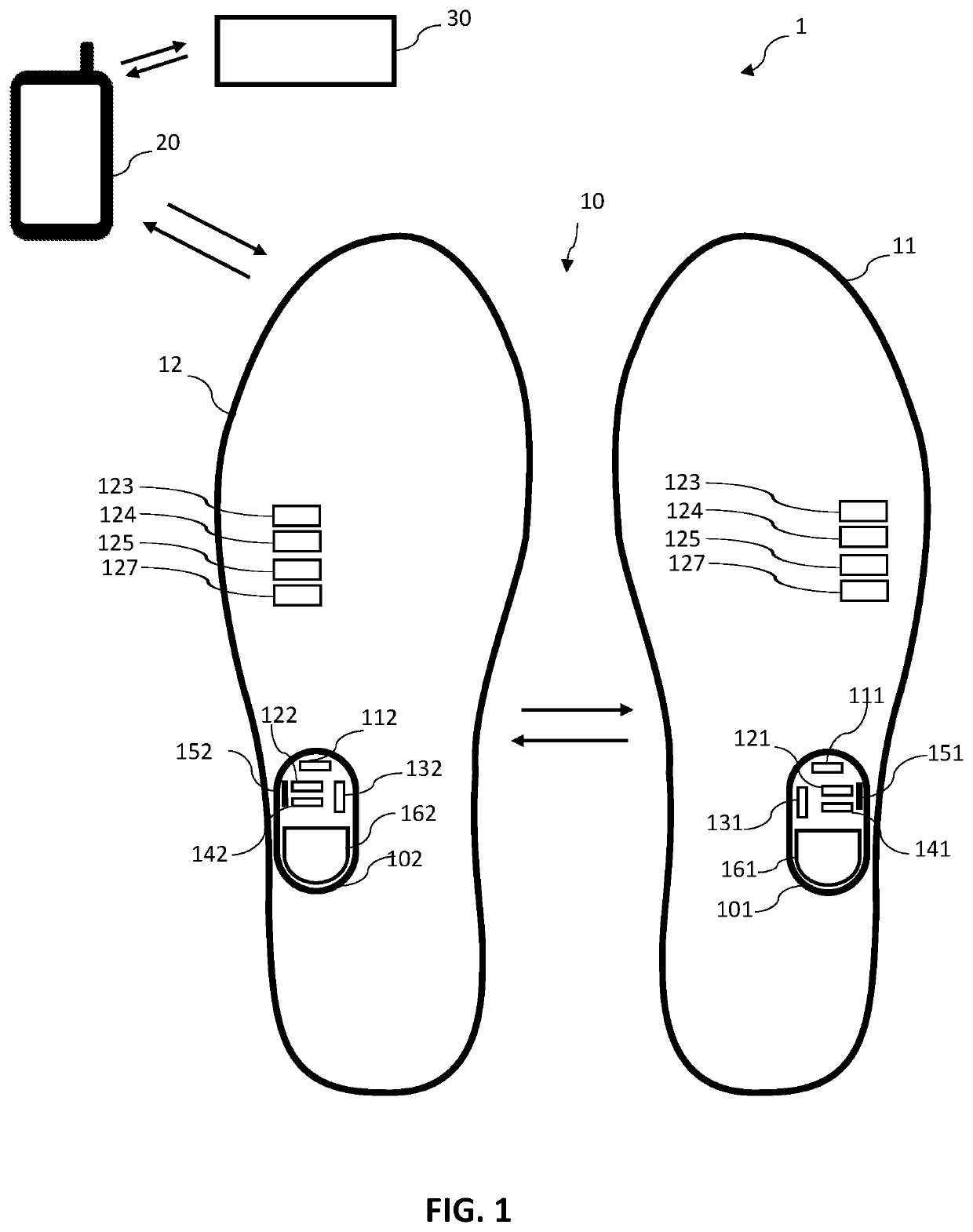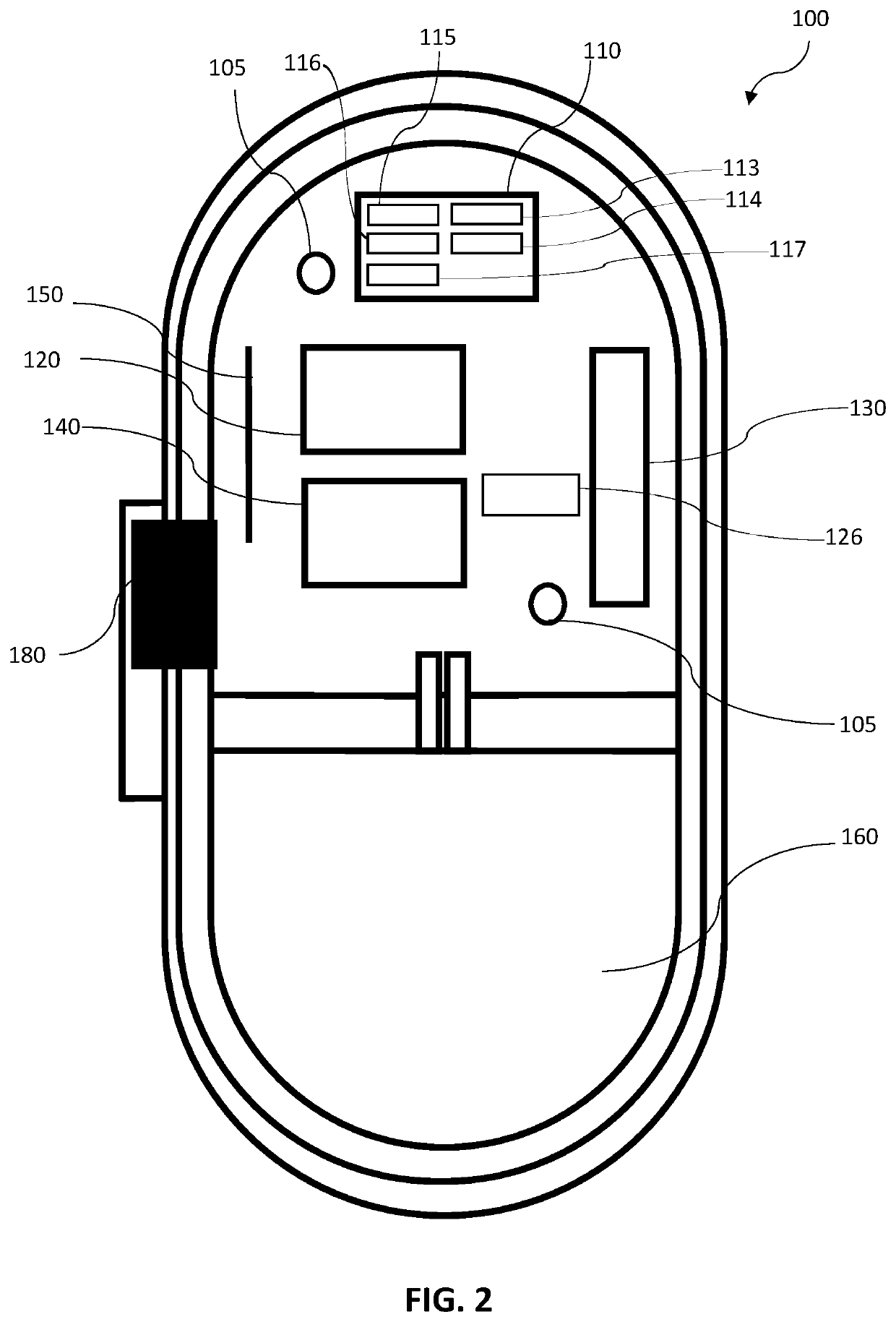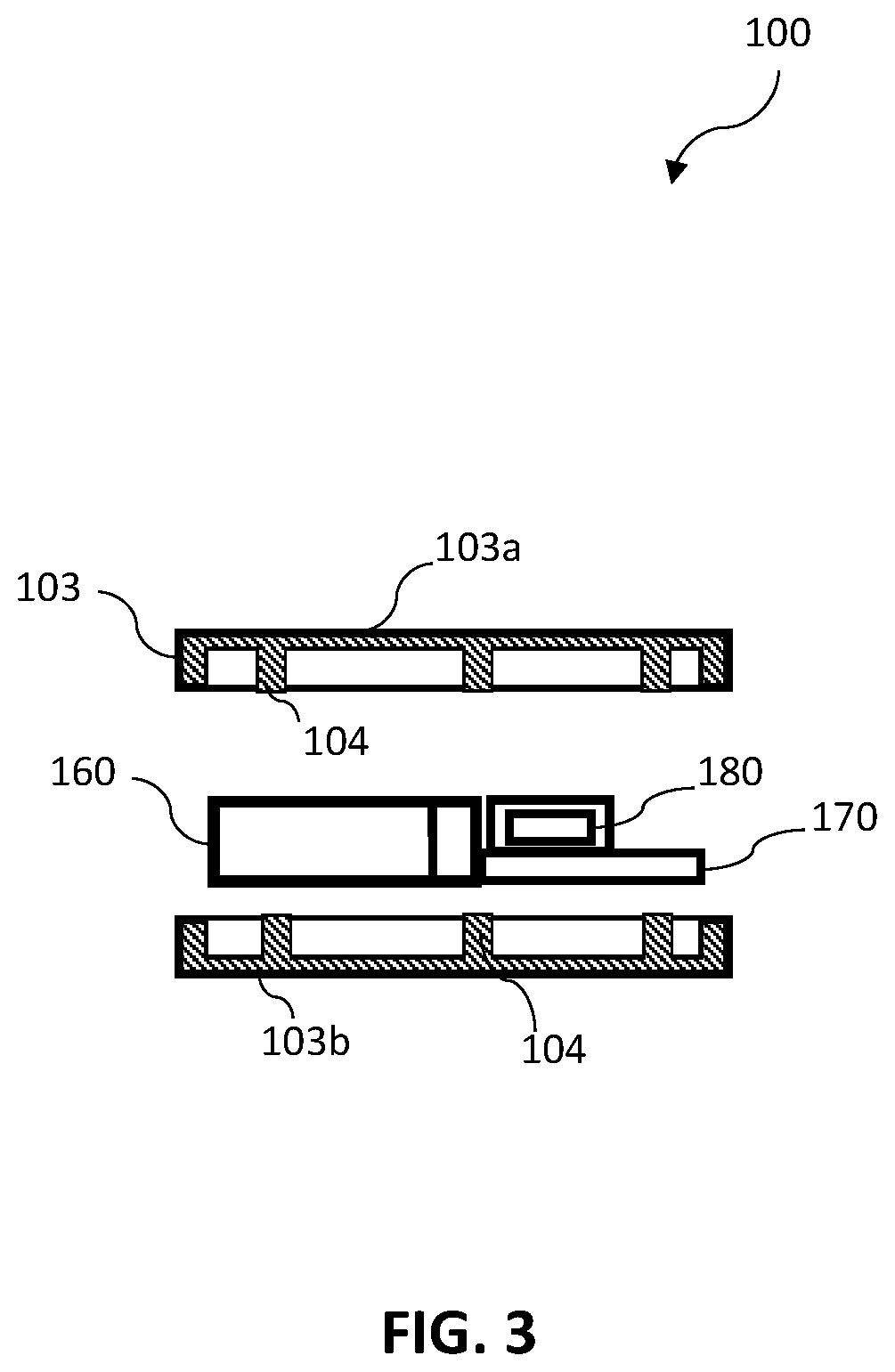Miniaturized electronic unit for integration in any sole
a technology of electronic units and soles, applied in the field of miniaturized electronic units, can solve the problems of affecting user comfort, unable to provide fine analysis of gait of users, and unable to generate quality data, and unable to meet the needs of users, and achieve significant additional costs associated with the manufacture of footwear
- Summary
- Abstract
- Description
- Claims
- Application Information
AI Technical Summary
Benefits of technology
Problems solved by technology
Method used
Image
Examples
Embodiment Construction
[0055]By “sole” is meant an object for separating the users foot from the ground. A shoe may include an upper sole layer in direct contact with the users foot and a lower sole layer in direct contact with the ground or more generally the outside environment. A shoe may also include a removable insole.
[0056]In the following description, “gait”, within the meaning of the invention, corresponds to the user's posture, movements, locomotion, and balance. The balance corresponds in particular to the postural balance linked to the stability of the body and more particularly to the stability of the users center of gravity. Nevertheless, it can integrate static and dynamic balance as well.
[0057]The “gait quantification” corresponds, within the meaning of the invention, to the assignment of one or more values, for example a score, a ranking or a mark to a trajectory or a movement of a users foot. This gait quantification allows to obtain one or more biomechanical parameter values representati...
PUM
 Login to view more
Login to view more Abstract
Description
Claims
Application Information
 Login to view more
Login to view more - R&D Engineer
- R&D Manager
- IP Professional
- Industry Leading Data Capabilities
- Powerful AI technology
- Patent DNA Extraction
Browse by: Latest US Patents, China's latest patents, Technical Efficacy Thesaurus, Application Domain, Technology Topic.
© 2024 PatSnap. All rights reserved.Legal|Privacy policy|Modern Slavery Act Transparency Statement|Sitemap



